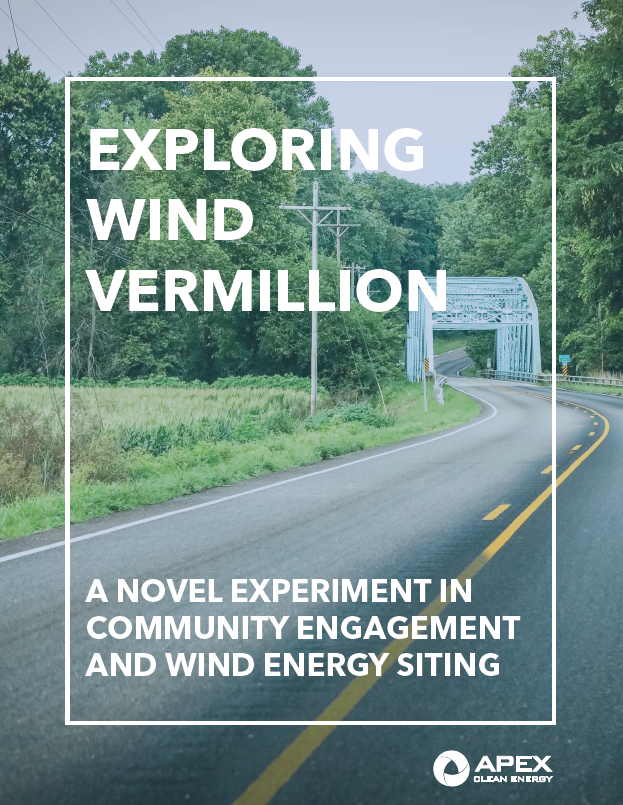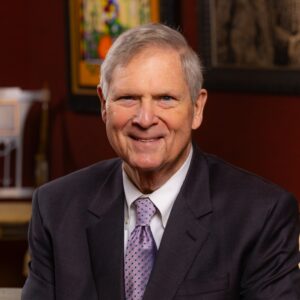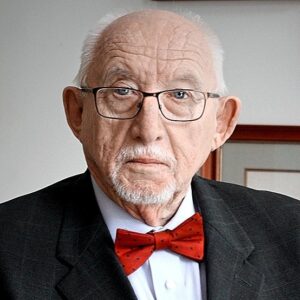Background
Spurred on by federal, regional, state, and local climate and energy goals and incentives, utilities and developers are looking to site clean energy projects all across the country. Despite the opportunity, as these projects proliferate, proponents are running into challenges with local concern, opposition, and/or regulation. In early 2020, Apex Clean Energy undertook a rare— and perhaps unique—experiment in collaborative decision-making, seeking a suitable community with which to engage to determine whether and how to site and build a wind energy project in that community. After being delayed by the arrival of the COVID-19 pandemic, Apex Clean Energy ultimately selected a community in which to attempt this approach: Vermillion County, Indiana. The full account of the project, approaches, collaborative engagement, challenges, and final takeaways are detailed in a report released in February 2023.
Engagement
Motivated and informed by previous community engagement experiences, Apex and Keystone Policy Center collaborated on a multimodal approach to community engagement over approximately one year. The approach involved independent research, outreach, and engagement from the facilitation team alongside work by Apex staff to develop relationships within the community. Community engagement opportunities took several forms so that residents could participate in the manner that worked best for them. Along the way, Apex and Keystone solicited candid input on a range of topics and questions; adapted to community responses and capacity to engage; and adjusted to the county political climate, respecting community leaders’ desire to convene town hall meetings and undertake an ordinance development process. Community engagement included the following approaches:
- Launching a website to provide a common space to share information about the proposed process; provide answers to questions frequently asked about wind energy; and aggregate all resources and opportunities for engagement with the community.
- Direct engagement with the community from Keystone Policy Center through stakeholder interviews, an online questionnaire, outreach to county commissioners, and visiting Vermillion County.
- Vermillion County residents were invited to participate in surveys on several topics that were intended to build on each other to increase awareness and understanding of wind energy in the community.
What Happened
Initial engagement indicated willingness among community members to engage in a process to explore wind energy in Vermillion County, though the process never succeeded in securing high levels of participation from community members. In addition, over the course of the engagement period, residents and local leaders appeared to grow fatigued with a duplicative and extensive engagement process being conducted in parallel by the Area Planning Commission (APC) regarding the county’s wind ordinance. Ultimately, the County Commission instituted a wind ordinance that eliminated the potential to site turbines in the county, precluding any possibility of Apex’s community exploration process to result in a viable wind project. After a brief effort to continue the process despite the new ordinance, the Apex and Keystone elected not to move forward with a more extensive community engagement process, due to an inability to generate meaningful and consistent participation from the public.
Lessons Learned
Keystone advocates for more inclusive, engaging, and meaningful processes through which affected stakeholders can learn, share, debate, and influence outcomes of projects and policies that affect them. The Vermillion County process put this advocacy to work on the ground in a robust way. But even the best of intentions and process design, a developer serious about changing business as usual, and a sincere intention to operationalize evidence-based best practices were not enough to result in a different outcome—an approved, tailored project with a satisfied community—than more traditional and contentious processes. But there are valuable takeaways from this project for future engagement:
- First, the entry point for innovative processes is critical. This report talks extensively about timing, sequencing, local sponsors, and the like. But the entry point—when, with whom, by whom—is essential to the trajectory of a project.
- Second, instigating collaboration takes more effort than achieving it. Because no one within the county was asking for an innovative siting process, let alone a wind project, the facilitation team could have shifted to a much more intensive engagement—been on the ground more, built more relationships, and worked harder to instigate and influence a good process.
- Finally, although not successful in this case, robust community engagement for successful project siting takes significant time and resources. Setting national and state goals is one thing, but permitting projects one by one on the ground is quite another.



 Shelby Coffey III is a distinguished journalist, media executive, and thought leader whose career has helped shape the landscape of American news and public discourse. Over several decades, Coffey has held some of the most influential roles in journalism, including serving as editor of the Los Angeles Times, executive vice president of ABC News, and deputy managing editor of The Washington Post. His editorial leadership extended to key roles as president of CNN Financial News, editor of the Dallas Times Herald, and U.S. News & World Report.
Shelby Coffey III is a distinguished journalist, media executive, and thought leader whose career has helped shape the landscape of American news and public discourse. Over several decades, Coffey has held some of the most influential roles in journalism, including serving as editor of the Los Angeles Times, executive vice president of ABC News, and deputy managing editor of The Washington Post. His editorial leadership extended to key roles as president of CNN Financial News, editor of the Dallas Times Herald, and U.S. News & World Report. Effective March 1, 2025, Thomas J. Vilsack, former United States Secretary of Agriculture and Governor of Iowa, became the first Chief Executive Officer for the World Food Prize Foundation. In this new role, Governor Vilsack is focusing on expanding the Foundation’s global network, and will further position the Foundation as a leader in addressing global food and nutrition insecurity, continuing his lifetime of public service.
Effective March 1, 2025, Thomas J. Vilsack, former United States Secretary of Agriculture and Governor of Iowa, became the first Chief Executive Officer for the World Food Prize Foundation. In this new role, Governor Vilsack is focusing on expanding the Foundation’s global network, and will further position the Foundation as a leader in addressing global food and nutrition insecurity, continuing his lifetime of public service. Jerry Steiner has spent 40 years involved in agriculture following growing up on a Wisconsin dairy farm. He began his career with Monsanto, in multiple business leadership roles. From 2003-2013 he served as a member of the Executive team, as the company’s Executive Vice President of Sustainability and Corporate Affairs. He led the company’s global Government, Public and Industry Affairs teams across the 70 countries where Monsanto conducts business. This experience got Jerry connected to the Keystones centers work in agriculture. Key among his responsibilities were shaping the company’s public policy and building partnerships aimed at helping farmers around the world produce more food, while conserving valuable resources like water and energy. Two unique partnership that developed under his leadership were drought tolerant corn with 5 African countries, CIMMYT and the Gates foundation, and a building a sustainable business model in Brazil with the value chain leading to significant multi-company investment and soybean varieties that can protected themselves.
Jerry Steiner has spent 40 years involved in agriculture following growing up on a Wisconsin dairy farm. He began his career with Monsanto, in multiple business leadership roles. From 2003-2013 he served as a member of the Executive team, as the company’s Executive Vice President of Sustainability and Corporate Affairs. He led the company’s global Government, Public and Industry Affairs teams across the 70 countries where Monsanto conducts business. This experience got Jerry connected to the Keystones centers work in agriculture. Key among his responsibilities were shaping the company’s public policy and building partnerships aimed at helping farmers around the world produce more food, while conserving valuable resources like water and energy. Two unique partnership that developed under his leadership were drought tolerant corn with 5 African countries, CIMMYT and the Gates foundation, and a building a sustainable business model in Brazil with the value chain leading to significant multi-company investment and soybean varieties that can protected themselves. Jennifer Morris is the Chief Executive Officer of The Nature Conservancy, leading a team of nearly 6,000 staff working in more than 80 countries and territories tackling the dual crises of the
Jennifer Morris is the Chief Executive Officer of The Nature Conservancy, leading a team of nearly 6,000 staff working in more than 80 countries and territories tackling the dual crises of the  Congressman Joe Neguse represents Colorado’s 2nd District in the U.S. House of Representatives. He was elected to his first term in November 2018, becoming the first Black Member of Congress in Colorado history. In December 2022, Rep. Neguse was elected by his colleagues to serve as Chair of the Democratic Policy and Communications Committee (DPCC), becoming the first Coloradan to serve in a senior elected leadership role in the House in over 85 years. He serves on the Natural Resources and Judiciary Committees, and was also appointed by House Minority Leader Hakeem Jeffries to serve as one of four Democrats on the prestigious Rules Committee. Rep. Neguse serves as Ranking Member on the House Subcommittee on Federal Lands, which he previously Chaired in the 117th Congress.
Congressman Joe Neguse represents Colorado’s 2nd District in the U.S. House of Representatives. He was elected to his first term in November 2018, becoming the first Black Member of Congress in Colorado history. In December 2022, Rep. Neguse was elected by his colleagues to serve as Chair of the Democratic Policy and Communications Committee (DPCC), becoming the first Coloradan to serve in a senior elected leadership role in the House in over 85 years. He serves on the Natural Resources and Judiciary Committees, and was also appointed by House Minority Leader Hakeem Jeffries to serve as one of four Democrats on the prestigious Rules Committee. Rep. Neguse serves as Ranking Member on the House Subcommittee on Federal Lands, which he previously Chaired in the 117th Congress. Llewellyn King was born in Southern Rhodesia, now Zimbabwe. He went into journalism as soon as he turned 16, stringing for Time magazine and United Press in Africa.
Llewellyn King was born in Southern Rhodesia, now Zimbabwe. He went into journalism as soon as he turned 16, stringing for Time magazine and United Press in Africa. Steven Williams is the Chief Executive Officer of PepsiCo North America, overseeing a more than $48 billion business that spans PepsiCo’s Foods and Beverage operating units. His leadership encompasses more than 125,000 associates and over 900 locations across the U.S. and Canada. Steven joined PepsiCo in 2001 as part of PepsiCo’s acquisition of the Quaker Oats Company, which he joined in 1997, and has held leadership positions of increased responsibility since.
Steven Williams is the Chief Executive Officer of PepsiCo North America, overseeing a more than $48 billion business that spans PepsiCo’s Foods and Beverage operating units. His leadership encompasses more than 125,000 associates and over 900 locations across the U.S. and Canada. Steven joined PepsiCo in 2001 as part of PepsiCo’s acquisition of the Quaker Oats Company, which he joined in 1997, and has held leadership positions of increased responsibility since.